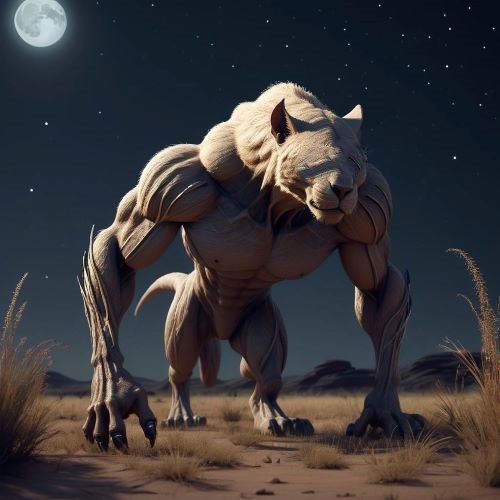Khoikhoi & San Mythology
Khoikhoi and San mythology, among the oldest spiritual traditions in the world, reflects the sacred wisdom of the first peoples of southern Africa. The Khoikhoi (pastoral communities) and the San (hunter-gatherers), together often referred to as Khoisan, developed rich cosmologies that mirror their intimate relationship with the land, animals, and the stars. Their myths, passed down through rock art, storytelling, and sacred rituals, are not merely tales of gods and creation — they are living expressions of balance, morality, and the interconnectedness of all life.
At the heart of San mythology is the belief that the world is alive with spirit. Every rock, animal, and gust of wind carries !num, the sacred life-force that binds existence together. The San see the spiritual and physical worlds as one continuous landscape, linked through trance, song, and dance. Their supreme being, ǀKaggen, is the trickster-deity and creator of life. Often taking the form of a praying mantis, ǀKaggen embodies transformation, creativity, and contradiction — he is both wise and foolish, gentle and fierce, divine and human. Through his actions, the world was shaped, and humanity was given the gift of understanding.
In one of the most famous San creation stories, ǀKaggen creates the eland, the first and most sacred animal, symbolizing beauty and spiritual power. When the eland is killed prematurely, ǀKaggen’s grief transforms its blood into rain, giving life to the earth. This story captures the San philosophy that life and death are part of the same sacred cycle — that all creation arises from sacrifice and renewal. Through trance dances, shamans reenter this cosmic rhythm, traveling between worlds to heal, restore balance, and communicate with the spirits of animals and ancestors.
The Khoikhoi mythology, while sharing many ideas with the San, centers on deities who govern moral law, nature, and destiny. Their supreme god, Tsui’Goab, is both a creator and a healer — a sky deity who brings rain, fertility, and light. His name, meaning “wounded knee,” comes from his mythic battle with Gaunab, the god of death and darkness. Each night, Tsui’Goab and Gaunab fight for control of the world, and each dawn represents Tsui’Goab’s victory as the bringer of day. This eternal struggle between light and darkness, life and death, echoes the Khoikhoi understanding of balance and resilience in a harsh natural world.
The moon, sun, and stars also hold sacred significance in Khoisan cosmology. The moon’s waxing and waning symbolize death and rebirth; the stars are the eyes of ancestors watching over the living. Rituals, songs, and dances align with celestial cycles, ensuring harmony between the community and the cosmos.
Even today, Khoikhoi and San mythology endures as a living philosophy of coexistence. It teaches reverence for the land, gratitude for sustenance, and respect for the unseen forces that shape life. Their stories remind us that the divine is not distant — it walks beside us in the footprints of the eland, the rhythm of the drum, and the whisper of the desert wind.



